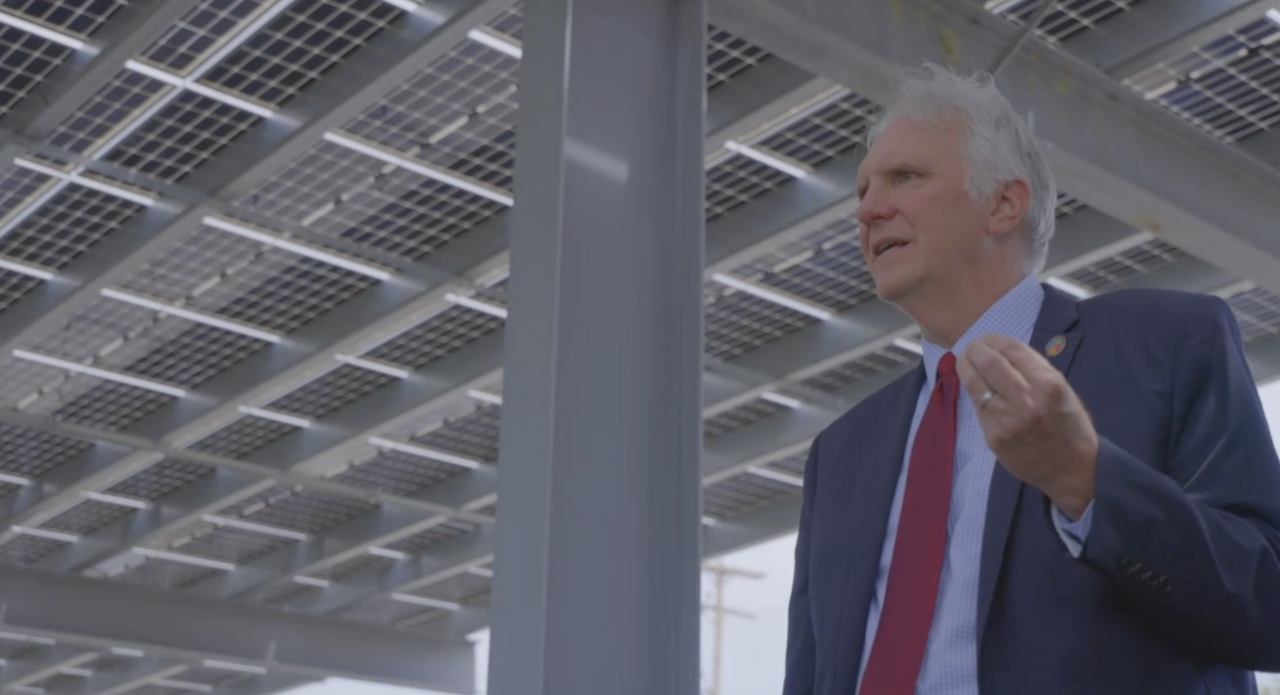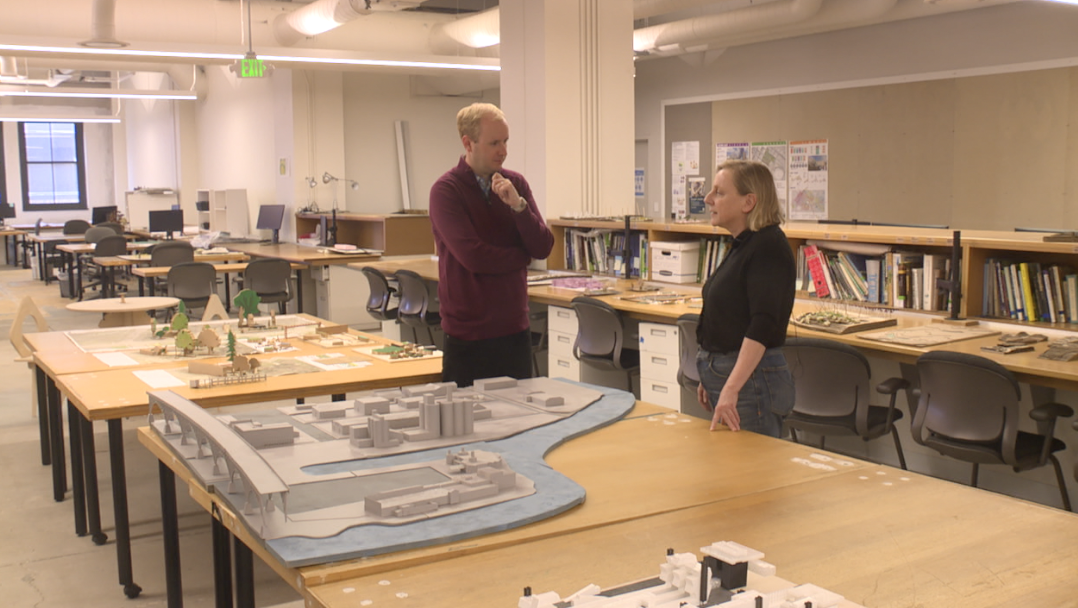SANDUSKY, Ohio — There's a certain serenity for Christine Parthemore when she watches the sunset along Lake Erie from near her home in Sandusky.
"People take vacations to get views like that," she said. "It's a huge quality of life benefit."
Parthemore and her husband moved to the area from Washington, D.C., four years ago when they started focusing on the type of environment they wanted their daughter to grow up in.
"You think a lot about their future and whether they have clean air and clean water and those types of things," she said. "Thinking the long term for us and our family, we wanted to calculate where we would have a sustainable place where we knew we could have a safe house and fewer natural disasters and clean water in abundance."

The family is what many would refer to as “climate migrants:” those that made the move, at least in part, because of the world they saw changing around them.
"I've traveled all over the world and especially in certain regions of Asia and the Middle East," she said. "It's so apparent how the climate is changing and how it impacts people’s lives and you can’t forget that’s going to be hitting us here in the United States. Dealing with those more extreme temperatures swings that shape how you live your life, it’s not pleasant. I don’t have any of that here in Sandusky."
As Cuyahoga County Executive Chris Ronayne points out, Northeast Ohio and the Great Lakes region could truly shine in the years ahead, given its natural resources, including 20% of the world's freshwater supply.
A chance to draw in families seeking safety and stability from this county’s increasing collection of wildfires, storm surges and rising sea levels.
“It's inevitable that people will find their way back to a place frankly that can absorb that migration because we were built for bigger populations way back when," he explained. "Around these great five lakes will be the sustainable global future."

The 250-kilowatt solar canopy over the surface parking lot, which opened last year, is estimated to produce up to 30% of total annual electric demand for the foundation's headquarters building.
But is Greater Cleveland destined to be a climate haven for others as our country sees more flooding, more fires, and more extreme temperatures?
While the premise makes sense, Terry Schwarz argues it’s not guaranteed.
"If we think people are going to pull up stakes and move because of climate issues, I think we need to look at that more closely," she explained. "I just don’t think we know. Although there are challenges here, it’s not as extreme as in other parts of the country."
Schwarz oversees the Kent State University Cleveland Urban Collaborative, which consults with communities on answering all sorts of urban issues, including climate migration.
“Is it crisis driven migration when lots of people be on the move all at once or is it happening gradually of people moving to the region to take advantage of opportunities and a place of relative safety," she said.
While Cleveland's population continues to fall, Schwarz points to Phoenix, one of the fastest-growing cities in the country, as proof that climate migration is not yet a reality in the country. Last year, residents in Phoenix experienced 54 days where the temperature crossed 110ºF.

"When there's a crisis, people don't move from New Orleans to Cleveland, a lot of people moved from New Orleans to Texas and then experience Hurricane Hugo a few years later," she said. "When there are heatwaves and droughts in California, they're not necessarily moving to Wisconsin or Minnesota; they're moving to Phoenix. People tend to stay in the areas where they are. I'm not saying the day won't come, but I don't think it's on the horizon."
Schwarz said to get a better idea of what could happen, we can look at certain indirect indicators, such as homeowners insurance rates or job opportunities, to better gauge climate migration in action.
"More likely, it would be something like companies moving to the great Lakes for water access, and then people moving not necessarily for climate but for job opportunities," she said. "And if people can't insure their homes, they might consider moving somewhere else."
“We are seeing freshwater migrants," EPA Regional Administrator Debra Shore told News 5. "I think industry will come before individuals but they are both coming.”
However, Schwarz added it doesn’t hurt for cities to be prepared.
"My colleagues refer to this as the 'Get your house in order' strategy," she chuckled. "Simply, if you're expecting guests, you get ready and clean up for them. If they don’t show up, at least the house is clean for the people who are already there."
Schwarz's study, which examines scenarios surrounding climate migrations, suggests that cities can regions can better prepare themselves for the future by focusing on affordable housing, restoring the urban tree canopy, reducing overall energy usage, better stormwater management and coordinating with other areas in the region.
Clay LePard is a special projects reporter at News 5 Cleveland. Follow him on Twitter @ClayLePard or on Facebook Clay LePard News 5.
Download the News 5 Cleveland app now for more stories from us, plus alerts on major news, the latest weather forecast, traffic information and much more. Download now on your Apple device here, and your Android device here.
You can also catch News 5 Cleveland on Roku, Apple TV, Amazon Fire TV, YouTube TV, DIRECTV NOW, Hulu Live and more. We're also on Amazon Alexa devices. Learn more about our streaming options here.





